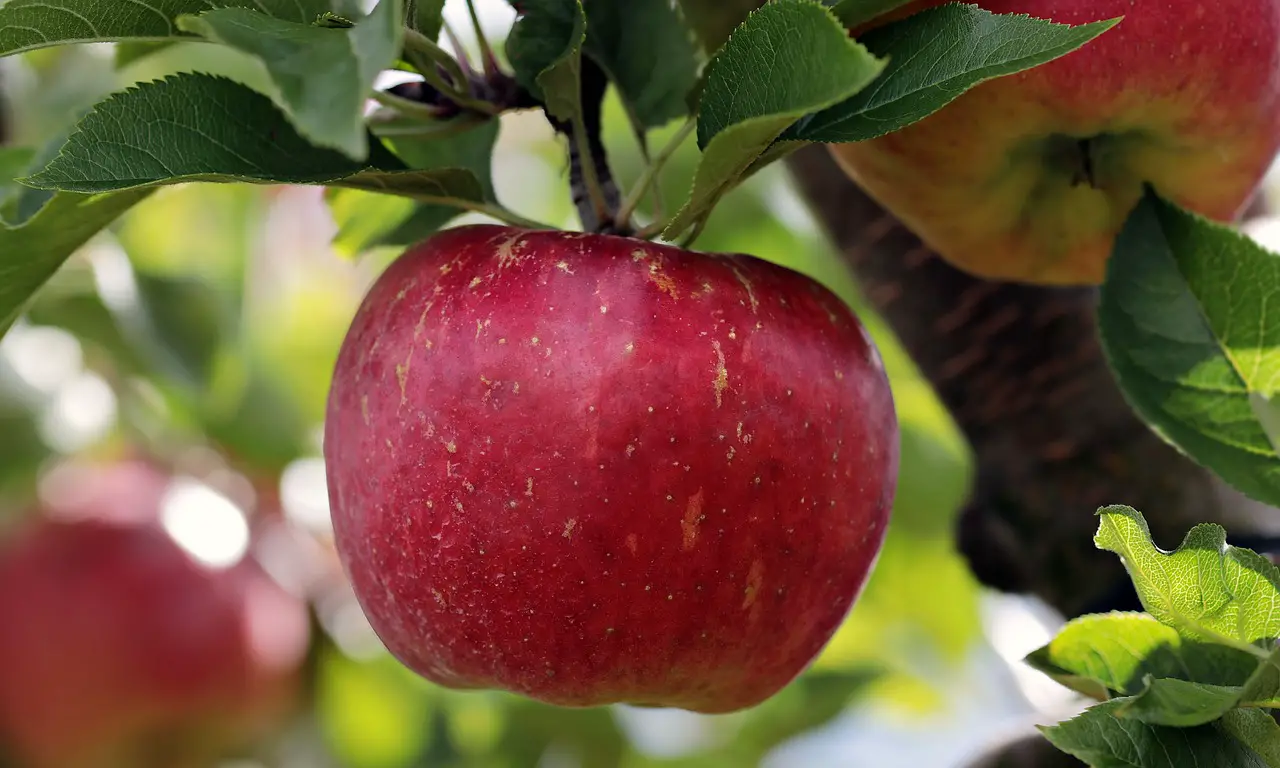Several trees symbolize family and unity, including the oak, the cedar, the maple, and the birch. These trees are often associated with strength, durability, and togetherness, making them powerful symbols of familial bonds.
Understanding Symbolism in Trees
Trees have always held significant meaning across various cultures. They serve not only as vital parts of our ecosystems but also as symbols of resilience and interconnectedness. Many societies regard trees as representations of family and unity, reflecting the deep-rooted connections we share with our loved ones and communities.

The symbolism associated with trees often stems from their characteristics. For instance, trees that grow tall and strong can represent stability and protection, while those that flourish in groups may symbolize togetherness and cooperation. Throughout history, different cultures have honored trees in rituals and folklore, attributing unique meanings to each species.
Popular Trees and Their Meanings
Here are some of the most recognized trees that symbolize family and unity:
- Oak Tree: Known for its strength and longevity, the oak tree represents stability and family ties. It is often regarded as a protector of the home.
- Cedar Tree: The cedar tree is a symbol of strength and healing. Its aromatic wood is valued for its durability, making it a favorite in many cultures.
- Maple Tree: The maple tree stands for balance and practicality. Its beautiful foliage in autumn adds to its representation of harmony within families.
- Birch Tree: The birch tree symbolizes new beginnings and renewal. It is often associated with the cycles of life, making it a fitting symbol for family growth.
The Role of Trees in Family Traditions
Trees often play a central role in various family traditions and celebrations. From planting a tree during significant life events to using wooden elements in ceremonies, trees are woven into the fabric of family life. They provide a sense of continuity and belonging, reminding us of our roots.

Many families choose to plant trees when welcoming a new member or celebrating milestones such as anniversaries. This act symbolizes growth and the nurturing of familial bonds over time. In some cultures, family trees are created to illustrate lineage and heritage, further emphasizing the importance of connection among family members.
Symbolic Trees Around the World
Different cultures have specific trees that are deeply symbolic of family and unity. Here are a few examples:
| Tree | Region | Symbolism |
|---|---|---|
| Olive Tree | Mediterranean | Peace and harmony |
| Bamboo | Asia | Flexibility and strength in unity |
| Pine Tree | Northern Hemisphere | Longevity and resilience |
| Baobab Tree | Africa | Community and unity |
The olive tree, for instance, is revered for its ability to thrive in harsh conditions while providing sustenance. It symbolizes peace and harmony within families. Similarly, bamboo represents flexibility and strength derived from close-knit relationships, while the baobab tree emphasizes community bonds that foster unity.

Understanding these symbols can deepen our appreciation for the connections we share with our families. Each tree tells a story of love, growth, and endurance through generations.
Conclusion of Section One
The symbolism of trees is rich with meaning, especially regarding family and unity. Recognizing these associations can enhance our understanding of personal relationships. As this exploration continues, we will delve deeper into specific trees and their significance in various cultures.
The Oak Tree: A Symbol of Strength and Family
The oak tree is one of the most revered symbols of family and unity. Its sturdy trunk and expansive branches represent resilience, stability, and strength. Many cultures celebrate the oak for its ability to withstand storms and grow over centuries, making it a fitting emblem for enduring family ties.
In various traditions, the oak tree is associated with protection and shelter. Families often plant oak trees to commemorate significant events, such as births or anniversaries. This practice reinforces the bond between family members and the natural world.

Characteristics of the Oak Tree
The oak tree is notable for several characteristics that contribute to its symbolism:
- Longevity: Oak trees can live for hundreds of years, symbolizing lasting family legacies.
- Strength: The robust wood of the oak is often used in construction and furniture, representing stability within a family unit.
- Beauty: The majestic form and seasonal changes of the oak tree create a sense of beauty that represents the joys of family life.
The Cedar Tree: An Emblem of Protection
Cedar trees have long been associated with protection and healing. Their aromatic wood is not only valued for construction but also revered for its spiritual significance. Many cultures believe that cedar trees ward off negative energy, making them ideal symbols for families seeking harmony and safety.
Cedar trees are often planted near homes to create a protective barrier. This tradition reflects the desire to safeguard loved ones and nurture familial bonds. In some Native American cultures, cedar is used in smudging ceremonies to purify spaces and promote unity among family members.
Cultural Significance of Cedar Trees
The cedar tree holds various meanings in different cultures:
- Middle Eastern Cultures: In ancient civilizations, cedar wood was used to build temples and palaces, signifying sacredness and strength.
- Native American Traditions: Cedar is considered a sacred tree, often used in rituals to promote healing and connection among communities.
- Western Symbolism: In Western cultures, cedar is often associated with eternal life due to its durability and resistance to decay.
The Maple Tree: Signifying Balance and Harmony
The maple tree is celebrated for its vibrant foliage and sweet sap. It embodies balance and harmony, making it a powerful symbol for families. The tree’s ability to thrive in various environments reflects adaptability, an essential quality for nurturing relationships.
Families often gather around maple trees during autumn to enjoy the beauty of changing leaves. This shared experience strengthens connections and fosters a sense of unity among family members.
Maple Tree Varieties
There are several species of maple trees, each with unique characteristics:
| Maple Species | Unique Feature | Symbolic Meaning |
|---|---|---|
| Sugar Maple | Produces sweet sap used for syrup | Generosity and nourishment |
| Red Maple | Brilliant red foliage in autumn | Passion and vitality |
| Silver Maple | Fast-growing and adaptable | Flexibility and resilience |
The Birch Tree: Symbolizing New Beginnings
The birch tree is often regarded as a symbol of new beginnings and renewal. Its white bark and graceful appearance make it a favorite in many landscapes. In family symbolism, birch trees represent growth and the cycles of life.
Planting a birch tree can signify the start of a new chapter for a family. Whether welcoming a child or moving into a new home, birch trees embody hope and the promise of brighter days ahead.
Birch Trees in Cultural Practices
Birch trees hold significant cultural value in various traditions:
- Celtic Beliefs: In Celtic mythology, the birch is associated with new beginnings and transitions.
- Nordic Traditions: Birch branches were used in ancient rituals to cleanse spaces and invite good fortune.
- Native American Customs: Birch bark was utilized for crafting canoes, baskets, and mats, illustrating resourcefulness within communities.
These aspects highlight the birch tree’s importance as a symbol of family unity and renewal throughout different cultures. Its presence in both daily life and significant events reinforces the bonds that unite families across generations.
The Olive Tree: A Symbol of Peace and Family
The olive tree is one of the oldest cultivated trees and carries profound symbolism in various cultures. It is often associated with peace, wisdom, and family unity. The olive tree’s ability to thrive in harsh conditions makes it a potent symbol of resilience and endurance within families.
In many traditions, the olive branch represents peace and reconciliation, highlighting the importance of harmony in familial relationships. Families often gift olive branches during significant events to symbolize their commitment to peace and support for one another.
Olive Tree Characteristics
Several characteristics contribute to the olive tree’s rich symbolism:
- Longevity: Olive trees can live for over a thousand years, representing enduring family legacies.
- Fruitfulness: The olives produced by these trees symbolize prosperity and abundance within a family.
- Adaptability: Olive trees grow well in diverse climates, symbolizing resilience and adaptability in family structures.
The Banyan Tree: A Representation of Unity and Interconnectedness
The banyan tree is unique due to its aerial roots, which grow down from the branches and take root in the ground, creating a vast network of trunks. This characteristic symbolizes interconnectedness and unity among family members. The banyan tree serves as a gathering place in many cultures, where families come together to celebrate, share stories, and strengthen their bonds.
In Hindu culture, the banyan tree is considered sacred and is often associated with the divine. It represents support and shelter, emphasizing the importance of family unity and protection against life’s challenges.
Cultural Significance of the Banyan Tree
The banyan tree holds various meanings across different cultures:
- Indian Traditions: In India, the banyan tree is a symbol of immortality and is often used in religious ceremonies.
- Buddhist Beliefs: It is associated with enlightenment and peace, representing the interconnectedness of all beings.
- Community Gathering: The expansive canopy of the banyan tree provides shade and shelter, making it a popular site for community gatherings and family celebrations.
The Cherry Blossom Tree: A Symbol of Ephemeral Beauty
The cherry blossom tree, particularly in Japanese culture, symbolizes the transient beauty of life. While it may not directly represent family in a traditional sense, its significance lies in the appreciation of moments shared with loved ones. The fleeting nature of cherry blossoms reminds families to cherish every moment together.
During the cherry blossom festival, families gather to appreciate the blooms, enjoying picnics under the trees. This practice fosters unity and creates lasting memories that strengthen family bonds.
Cherry Blossom Festivals
Cherry blossom festivals occur worldwide, celebrating the beauty of these trees:
- Hanami in Japan: A centuries-old tradition where families gather to admire cherry blossoms while enjoying food and drink.
- National Cherry Blossom Festival in Washington, D.C.: Commemorates the gift of cherry blossom trees from Japan to the United States, promoting friendship and cultural exchange.
- Community Events: Many communities host festivals celebrating cherry blossoms, bringing families together for activities and entertainment.
The Fig Tree: Symbolizing Abundance and Nurturing
The fig tree is often associated with abundance, fertility, and nurturing. Its sweet fruit symbolizes the rewards of hard work and care within a family unit. In various cultures, fig trees are planted near homes to signify prosperity and nourishment for future generations.
The fig tree also has a rich history in religious texts, often representing divine blessings and familial wealth. This further reinforces its status as a symbol of family unity and support.
Fig Tree Characteristics
The fig tree possesses characteristics that enhance its symbolic meaning:
- Fruitfulness: Figs are a source of nourishment, symbolizing the importance of providing for one’s family.
- Resilience: Fig trees can thrive in various environments, representing adaptability within family dynamics.
- Cultural Significance: In many cultures, figs are seen as a treat or delicacy, reinforcing communal sharing within families.
Through these diverse trees — from the oak to the fig — we see how nature embodies values that resonate deeply within families. Each tree tells a story of connection, strength, and endurance across generations. As we continue to explore more trees, we will uncover their unique roles in symbolizing family unity and love.
The fig tree is indeed a remarkable symbol of familial bonds, standing as a testament to the importance of nurturing relationships. Its ability to thrive in various environments represents the strength and adaptability that families must possess to overcome challenges together. The fig tree’s rich cultural significance further emphasizes its role in fostering community and unity among loved ones.
The Sycamore Tree: A Symbol of Protection and Strength
The sycamore tree is known for its impressive size and strength, often serving as a symbol of protection in many cultures. Its broad branches provide ample shade, making it a gathering spot for families and communities. This characteristic reinforces the idea of shelter and safety, essential components of familial unity.
In ancient Egypt, the sycamore tree was revered and often associated with the goddess Hathor, representing motherhood and protection. The connection between the sycamore and maternal care highlights the role of family in providing warmth and security.
Characteristics of the Sycamore Tree
The sycamore tree possesses several defining traits that contribute to its symbolism:
- Height: Sycamores can grow very tall, symbolizing aspirations and ambitions within a family.
- Durability: The wood of the sycamore is strong and resistant to decay, representing the lasting nature of family bonds.
- Broad Canopy: The expansive branches provide shelter, showcasing the protective instincts families have for one another.
The Sequoia Tree: A Monument to Family Legacy
The sequoia tree is one of the largest and oldest living trees on Earth. Its immense size and longevity make it a powerful symbol of family legacy. Sequoias can live for thousands of years, representing the enduring nature of familial connections across generations.
Many families take inspiration from the sequoia’s resilience and strength, recognizing that just as these trees withstand harsh climates and natural disasters, so too can families weather life’s storms together.
Symbolism of Sequoia Trees
The sequoia tree embodies several key traits that resonate with family values:
- Endurance: The sequoia’s long life signifies the importance of legacy and continuity within families.
- Interconnectedness: Sequoias often grow in groves, demonstrating how families thrive when they support one another.
- Magnitude: Their massive presence serves as a reminder of the impact families can have on future generations.
The Importance of Trees in Family Life
Trees play a vital role in family life beyond their symbolic meanings. They provide spaces for gatherings, create memories, and foster a sense of belonging. Planting a tree together can serve as a cherished family ritual, marking significant life events or transitions.
The act of nurturing a tree can also reflect the care families extend to one another. Just as trees require water, sunlight, and protection to thrive, so do familial relationships need love, support, and attention.
Final Thoughts
As we explore the various trees that symbolize family and unity, it becomes clear that nature offers profound insights into our relationships. Trees like the oak, cedar, maple, and olive serve as powerful reminders of the values we hold dear: strength, resilience, protection, and nurturing. Each tree carries its own story, reflecting the complexities and beauty of family dynamics.
The symbolism of these trees encourages us to appreciate our roots while also recognizing the importance of growth and renewal. In a world that often feels disconnected, embracing the lessons from these trees can inspire us to strengthen our bonds with family members and cultivate unity within our communities.
In conclusion, whether through planting a tree in honor of a loved one or simply appreciating their beauty in our surroundings, we can find ways to celebrate family connections. By cherishing these symbols of unity and love, we nurture not only our relationships but also the environment that sustains us all.
